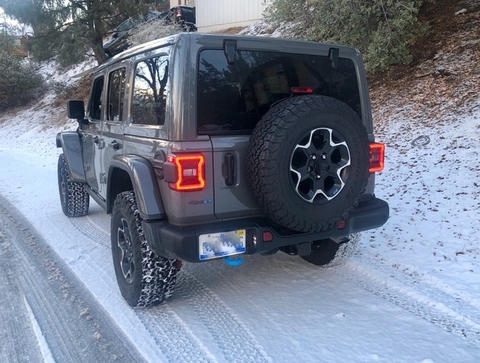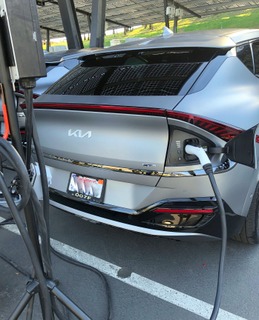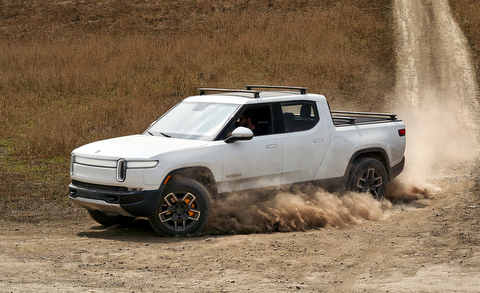Tips To Deal with the Challenges of Rural Charging
The question of whether you should buy an EV instead of a traditional ICE car is a very hot topic. Government agencies at various levels are proposing incentives to increase uptake of EVs while also instituting restrictions for ICE vehicles, such as zero-emission zones.
Most Americans are aware that President Biden wants the purchase of gas-powered vehicles banned by 2035. So, if you’re going to buy a brand new vehicle at that point, you’ll have no option but to buy an electric car if Congress puts the ban into legislation. Several states have already moved on that front, even if federal rules are not passed.

One of the main talking points people discuss is they worry about not being able to find a place to charge their EV, especially if they live in rural areas.
In this article, we take a deep dive into ways you can overcome this issue, especially if you live in the more rural communities of America.
Install a Home Charger
There’s no debating that most EV owners charge their vehicles at home. Surely the best way to own an EV is to install a wall-mounted charger at one’s residence in order to charge the EV overnight, and wake up to a full battery in the morning.
This is even more important if you do not live or work in a city where public charges are far more widely available. Out in the country, it’s a little different!
The federal government in conjunction with energy companies is working hard to increase the charging infrastructure, but are folks in rural spots being overlooked?
Having the convenience of a home charger is definitely the most ideal option. Moreover, rural drivers are more likely to live in homes where they can park their car, as multi-unit dwellings are not so common in rural spots. Consequently, home charging is simplified significantly in such areas.
Purchase a Long Range EV
Driving an EV in rural areas has its disadvantages.
Primarily, such areas will often not offer such a smooth driving experience, so mountains, hills and poorly surfaced roads will drain the EV’s range considerably.

Additionally, there’s also the issue of colder weather in more exposed areas. An EV might offer around just 80% of the official claimed range if weather conditions are very cold. Also, it takes longer to charge an EV in colder temperatures.
That said, while some argue that range limits might make EVs an unattractive option for rural drivers, it’s worth noting that newer EV models pride themselves on having much longer ranges than one might think. Indeed, most EV models being launched in recent months can offer very long ranges, making it still reasonable for one to drive an EV out in the country.
On just one full charge, many EVs are capable of a range of around 300 miles. The key is to invest in an electric car that can offer such a range.
Additionally, many newer AWD EV’s can handle going off-road. In case of rough terrain, the suspension on some models can be adjusted to suit.
The most important thing is to make sure that the car has been fully charged before tackling rather rough terrains, such as snow, sand or mud.
Charger Sharing Apps
Nowadays community charging via charger sharing apps is helping a great deal to alleviate anxiety associated with battery depletion. Thanks to these apps, you’ll be able to find a lot more places where a charge point is available for use.

Naturally, when it comes to rural areas, the accessibility of public charging points is not going to be as plentiful as one will expect from an urbanized zone. Some companies that offer off-road capable vehicles, like Jeep and Rivian, are championing the development of more rural public charging.
However, there should still be plenty of charge points that one can take advantage of within close proximity to rural areas as more EV drivers sign up to these services and share their charge points in the future.
When motorists start to recognize the mutual benefits of sharing their chargers, more and more people will start to do it.
Tax Incentives
The tax incentives being offered by the government are helping a lot in boosting the sale of EVs. With a federal income tax credit of up to $7,500 available for some EV buyers, one might stop to consider this huge financial incentive. State and local entities also have incentives as do some utilities and private companies.
These incentives are making it more feasible to finance the considerably higher priced electric cars, leading to more EV uptake. The upfront cost of buying an EV is greatly lessened thanks to these tax rebates.
It’s also worth mentioning that over time there’ll also be savings on fuel and maintenance costs, with both surging for traditional gas vehicle owners.
Don’t Resist Change
One of the main scenarios associated with any kind of shift away from considered norms is that people are inherently resistant to change or are hesitant to do so. Among fears and concerns, electric cars are making many people worry whether they will be able to make a good choice or not.
One thing is for sure though–over time we’ll all have to switch to electric sooner or later, so the best option is to avoid resisting change until the very last minute and instead, aim to accept it.

One good way to do this is to learn more about electric vehicles, their ranges, the advancements that have been made in this field, as well as the various positive aspects that one can benefit from when purchasing an electric vehicle.
Ultimately, we all need to be a part of the grand evolution towards a pollution free world.
And the sooner we start, the better.
Conclusion
While driving an electric vehicle in rural areas is seemingly a lot more challenging than in an urbanized zone, there’s really no reason to fear driving one.
Longer range EVs, improved technologies and investing in a home charger are just some ways to make the shift a more palatable option.
The federal government is also going out of its way to offer sizable income tax rebates, as well as investing in improved charging infrastructure and implementing policies that will lead to improved electrified transportation.
Big changes are on the horizon. And so it’s how you deal with those changes and how quickly that will invariably determine how well you prosper.

1 thought on “5 Tips on Switching to an EV in Rural Areas”